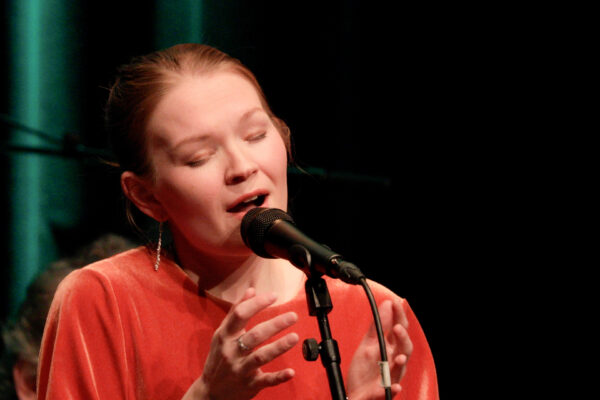Yodeling, Joik and Krimanchuli
The film "Beyond Tradition" by Lea Hagmann and Rahel von Gunten captivates with overwhelming images and some bizarre aspects. Conflict-laden aspects are often only touched upon.

The website for the List of Living Traditions of Switzerland states: Naturjodel and Jodellied are widely regarded as the forms of singing that represent Switzerland. The UNESCO Convention for the Safeguarding of the Intangible Cultural Heritage obliges the acceding countries to draw up such a list. Yodelling, the list continues, is "a vocal form of expression in which phonetic syllables are sung in frequent alternation between the chest and head registers". This change of register creates laryngeal beats, which are made more or less audible depending on the singing tradition. And sequences of tonally different, alternating low and high tones are formed. The singing technique can be found on all continents in a variety of forms characterized by vocal formations, languages and dialects. Yodeling is also used in Georgia as "Krimanchuli" or in Northern Europe. There, the Sami people yodel.
Geographical connections
In their documentary, directors Lea Hagmann and Rahel von Gunten and producer Thomas Rickenmann portray these Sami and Georgian singing traditions alongside the Appenzell Rugguusseli. The young Appenzell yodeller Meinrad Koch, who has "absorbed the typical regional style of natural yodeling with his mother's milk", as he says, provides the narrative link. For the film, he travels to Georgia to meet Tbilisi music student Ninuca Kakhiani and to Norway to meet Marja Mortensson, who is as good with reindeer as she is with her voice. Together with drummer Jakop Janssønn and tuba player Daniel Herskedal, she fuses modern soundscapes, sampling and modal jazz with the traditional Joik of the Southern Sami in a fascinating way. Herskedal also composed the atmospherically harmonious title melody for the film.

Ideologically divisive
Beyond Tradition is primarily characterized by the stupendous, virtuously composed images of the Norwegian, Appenzell and Georgian landscapes. Many of them, shot with a drone, aestheticize and transfigure the scenarios: The migrations of the northern reindeer herds look like flocks of birds from a distance, the desolate Georgian prefabricated housing estates develop a poetry of their own. The visual language is so strong that it threatens to push the actual theme of the film into the background and also to conceal thematic gaps: on the one hand, there is the question of how the raw primitiveness of nature's voices can become an art form when these two phenomena are actually mutually exclusive. Secondly, the production company Extramilefilms explicitly mentions "the critical examination of tradition and the inclusion of innovation and youth culture" as the motif of the documentary. The fact that tradition and renewal are often perceived as a conflict and that this is carried out emotionally is hardly noticeable in the film: how traditionalists view the innovative approach to the old is left open.
In addition to these differences, there are others: both Marja Mortensson and Meinrad Koch have a rather special relationship with food that takes some getting used to. Koch is a food technologist studying the potential of insects as a future source of protein, while Marja Mortensson bakes pancakes from the blood of slaughtered reindeer. The latter in particular breaks through the feel-good atmosphere of the film and hardly seems organically embedded in the overall narrative context.
Bulky topics
Other, more irritating or unwieldy topics that could disturb the peace are only mentioned and not really elaborated on: For example, one becomes perceptive when the charismatic choirmaster Tamar Buadze in Georgia rather incidentally addresses the conflict between the legacy of art socialization in the Soviet Union and modern cultural understanding (which incidentally also applies to some extent to Sami culture). The repressive policy of the Scandinavians, who pushed yoiking into obscurity with state bans, is also merely touched upon.

We would also have liked to know more when Meinrad Koch admits that the witty, creative and original approach of the "Hitziger Appenzellerchor" - the film clips with the ensemble founded by Noldi Alder are highly refreshing - to Appenzell's cultural heritage did not only arouse enthusiasm among traditionalists. What remains of the film experience are touching, sometimes overwhelmingly beautiful images and the successful synthesis of landscape poetry and vocal textures that make you forget time and the present in the cinema.









